Over many years we have developed strong relationships with a small number of UK sawmills, helping us to ensure the quality of our furniture right from the beginning. We keep good quantities of our more commonly used timbers at the workshop, in various thicknesses of board, to allow us to select the most appropriate pieces for any given job from a broad range of stock.
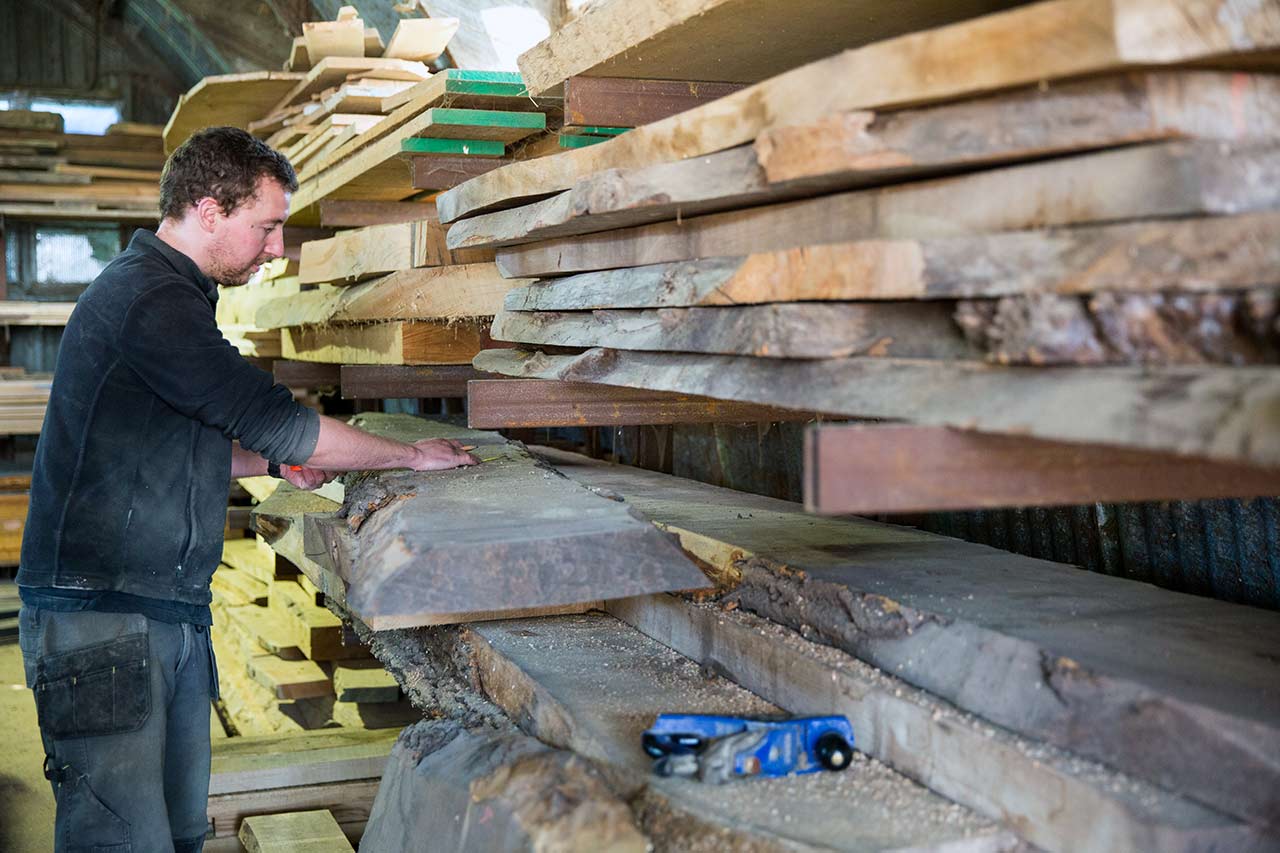
Our preference is to use English hardwoods, although we also work in various European and American timbers such as Maple, Cherry and Black Walnut. English Oak is particularly popular, especially the character, pippy, and burr grades where the idiosyncrasies of each piece are most apparent and, with careful selection and craft, most interesting.
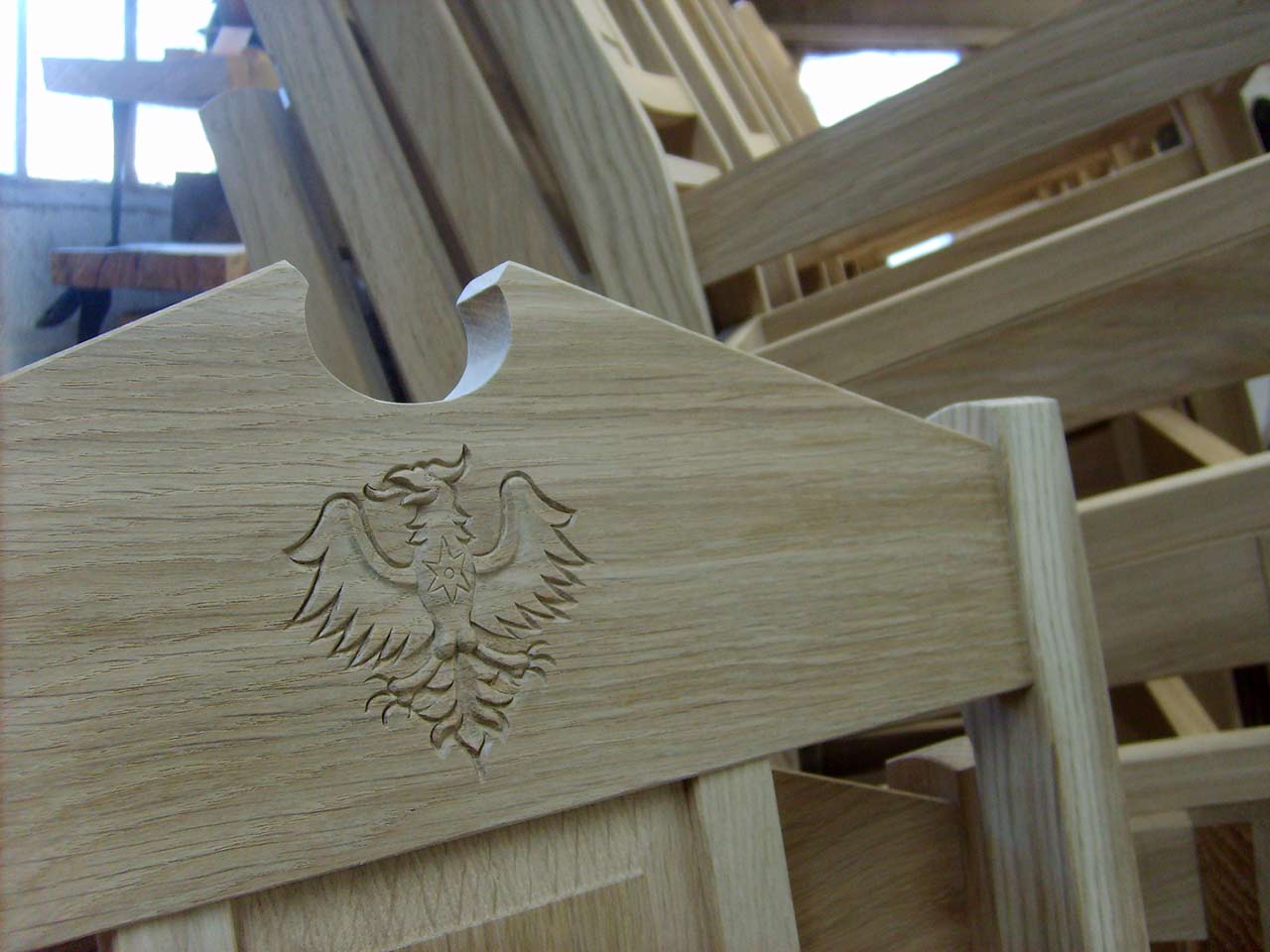
For many of our chairs, especially the 'Windsor' styles where the legs and back of the chair are fitted into the solid slab of the seat, we use English Ash. This is in many ways an ideal timber for chair making. It is relatively light, yet strong, it can be steam-bent reliably and has a good degree of spring to it (hence its use in carriage-work and the early days of the motor industry). It is also light in colour, allowing a broad range of finishes to be applied to it, from its very pale natural state to the very dark. We can also offer traditional Elm seats on our Windsor chairs.
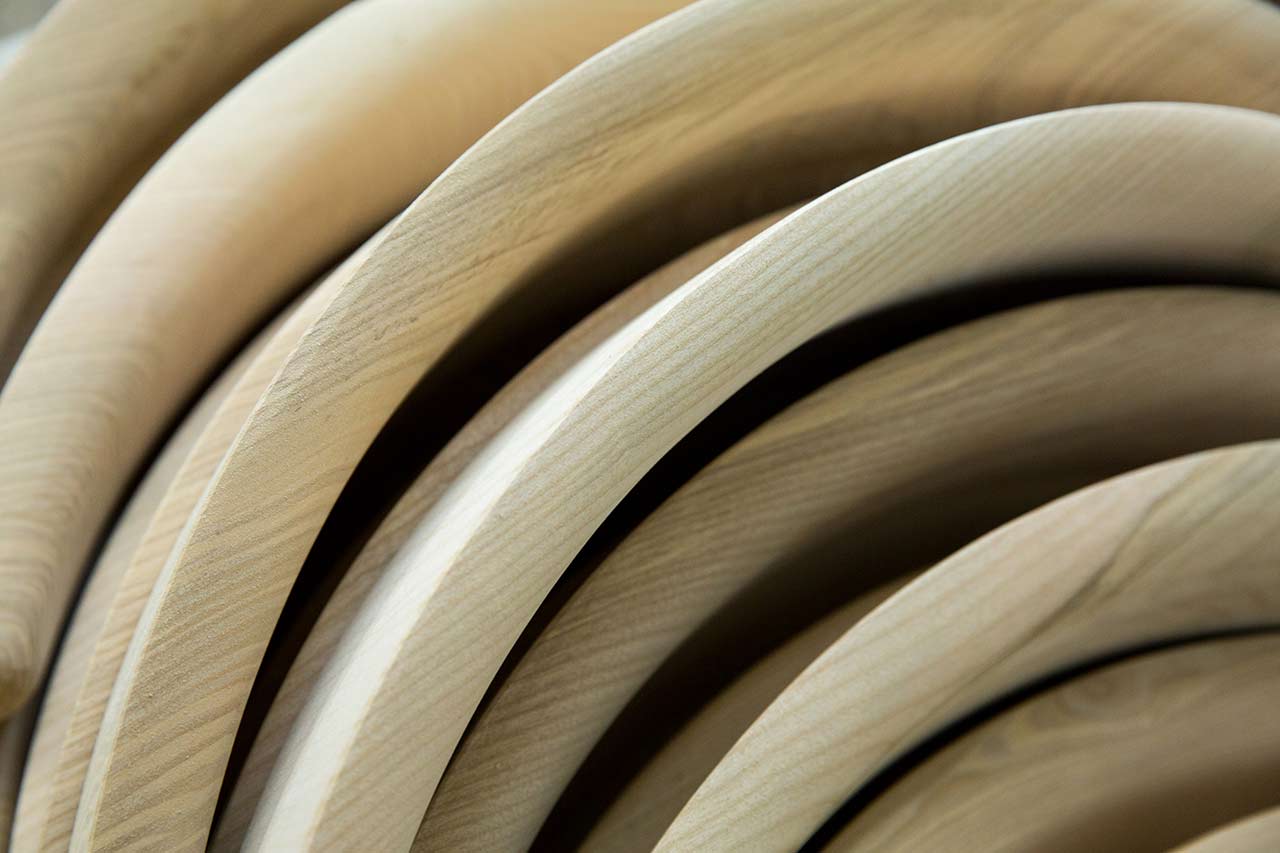
Depending on the requirements of the project, we use a variety of different polishing materials. For a very simple treatment, we might use an oiled finish, either Danish oil or Osmo oil, which gives a low sheen lustre, whilst still bringing out the natural beauty of the wood. Traditional French polishing may be used. Other pieces may require a pre-catalysed lacquer, or for high wear surfaces, an acid catalysed lacquer or a polyurethane finish. For pieces with an antique finish, artificial ageing may be carried out using a variety of techniques, stains, and polishes, the work being built up in layers to achieve the final effect. We have a number of standard finishes, and can also colour match new pieces to a customer's existing furniture.

For furniture with upholstered elements, we work with a local specialist upholsterer. For our standard items, and in the case of one-off pieces, development is always done in liaison with him to ensure the most appropriate construction, both from the furniture maker's, and the upholsterer's, viewpoint. As a general rule, we suggest that for fabric upholstery the customer provides their own material, once we have advised on required quantities. For leather upholstery, because of the complications of having to purchase whole hides and the relative scarcity of suppliers, we can supply the leather.

Another option for some chair seats, principally on the 'Rycote' ladderbacks and spindlebacks, is a rushed seat. The rushing is fitted directly onto the chair frame and is therefore integral to its construction. Rushwork is a very traditional technique, although there is no reason it cannot be used in striking juxtaposition with a highly contemporary design
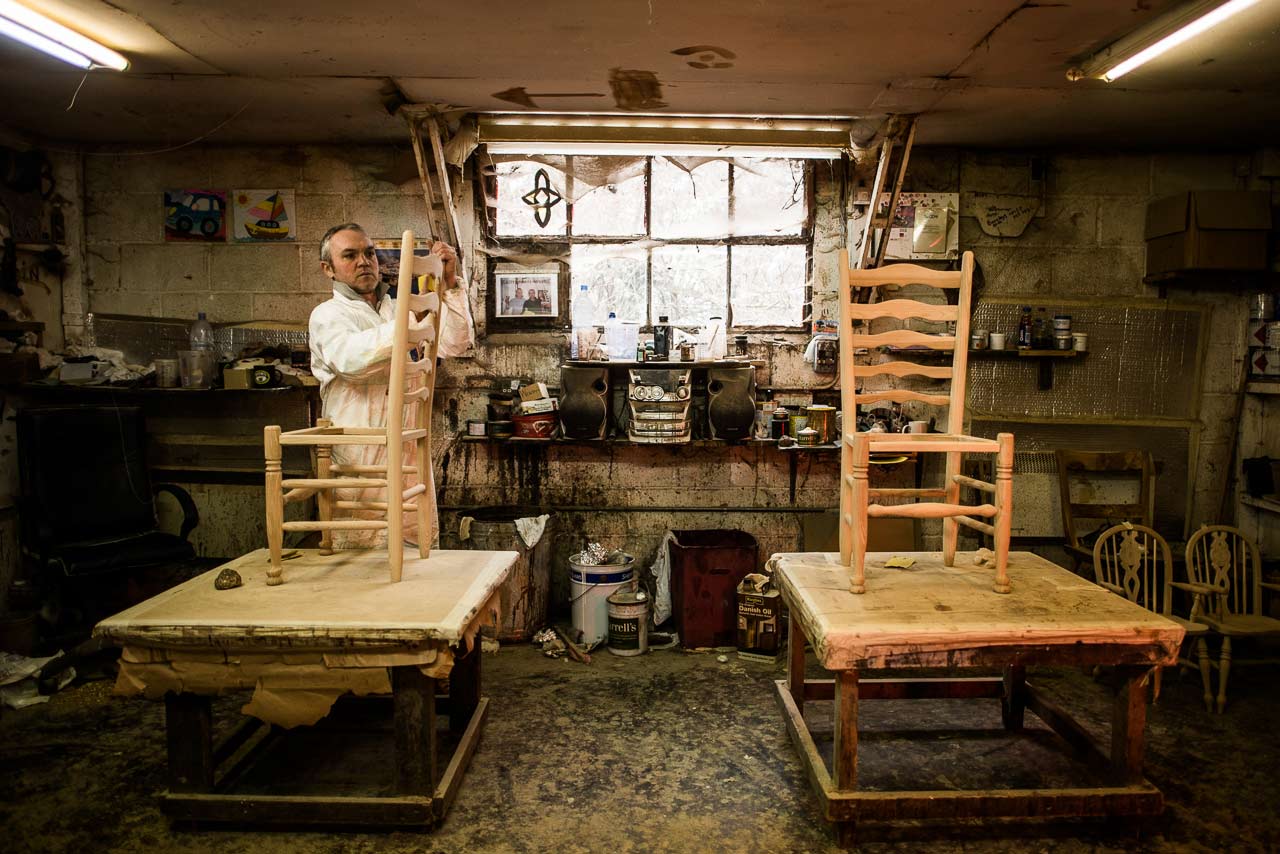
For work involving turning or carving, separate trades in their own right, we work with local makers who specialise in these particular aspects of component production. We select the timber, manufacture the blank components and design the required patterns. Once turned or carved as appropriate, we incorporate these elements back into the finished piece.

Electrical components, and brassware such as handles, catches, stays and so forth are bought from suppliers whom we know can be consistently relied upon.
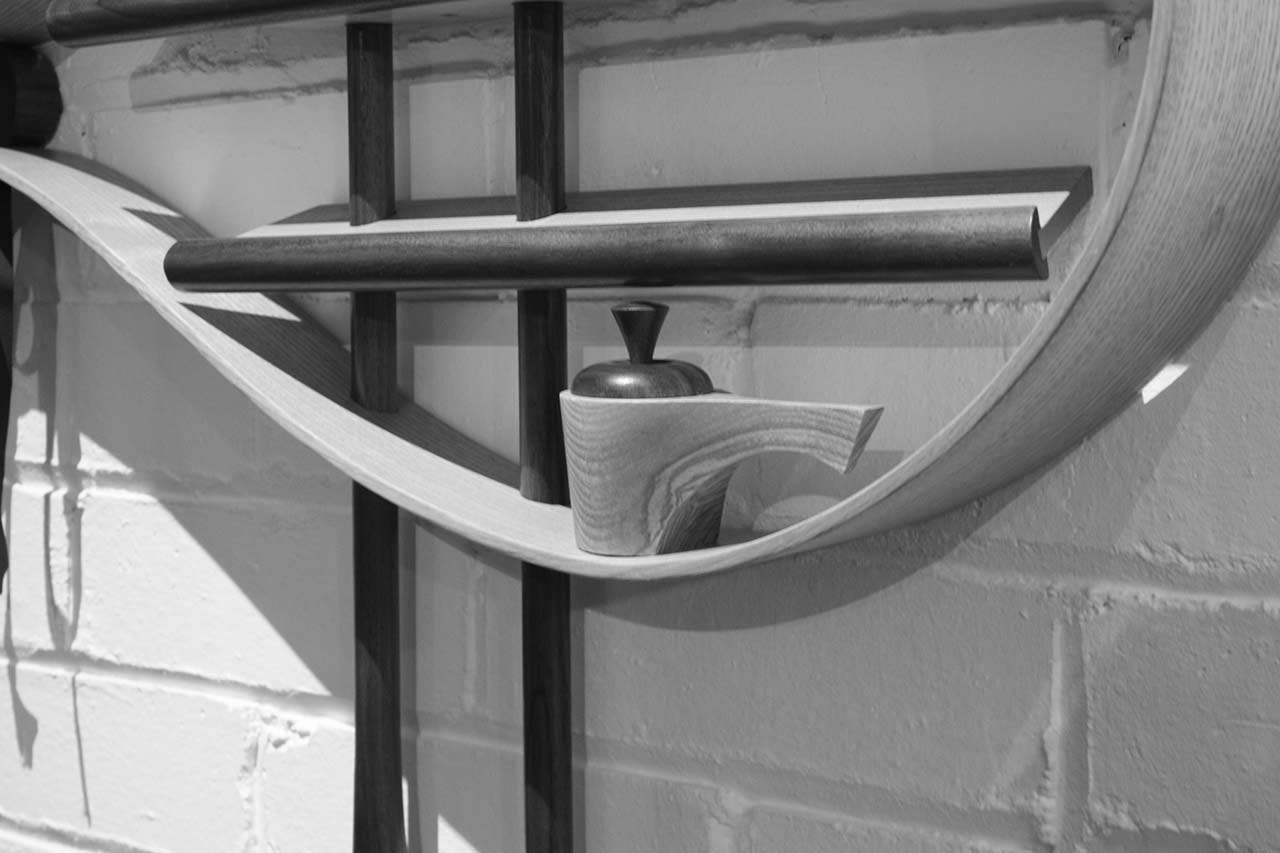
Glass elements, such as mirrors and glazing, are ordered for specific projects from a local supplier. All appropriate safety treatments, such as toughening, laminating, and shatterproof backing for large mirrors, can be undertaken, as well as decorative work like polishing, bevelling and frosting.
